Do we really need all the stages of the Path of the Sufi?
هل نحتاج فعلا الى كل مراحل الطريق نحو الحقيقة؟
My encounter with Sheikh Nazim, which I described in last week’s post, was a simple but profound encounter. It demonstrated how those who have achieved true wisdom can rise above all the rituals and bindings of religion as a man-made institution, and go to the heart and essence of all spirituality that is common to all. As Sheikh Nazim said, whatever flavor your choose does not matter as long as you are on a path.
That encounter initially re-enforced my then-nascent interest in Sufism as a way to reconcile the concepts I had connected with in Buddhist philosophy with my Islamic cultural heritage- which was not by any means strong but still was what I was born into. I did not however get a real chance to dig any further into it, and within a few years I had anyway outgrown this grey area of feeling like I need to compromise, and had become comfortable as I said before in making up my own cocktail of spiritual beliefs regardless of where they came from. But when seven years later an opportunity came to visit Konya with some friends, it was a great opportunity to discover more about Sufism even if more out of a general interest in all spiritual traditions rather than a need to reconcile with my own religion.
Konya is the heart of Sufism and in the heart of Anatolia in Turkey. It the place where the most famous mystic Sufi poet Mawlana Jalaluddin Mohammad Rumi lived and taught for a large part of his life, and he is also buried in the city. It is where his intense relationship with Shams of Tabriz played out, recently made famous in popular culture by the book “The Forty Rules of Love” (I hear a feature film starring Di Caprio as Rumi is also in the making!). Since the Mawlawi order of the whirling derviches was founded by his son based on Rumi’s writings, Konya is also the site of many of these spiritual performances.
My group of friends and I chose to visit Konya in December, and maybe that was the main mistake. Every year from December 10 to 17, thousands of pilgrims descend upon Konya to celebrate the passing of Rumi and commemorate his legacy amidst the biggest whirling dervishes festival in the world. “Festival” is the right word, as the crowds in the streets and at the various events as well as the huge Sema ceremony that takes place every night make this more of a major touristic affair than a spiritual one- even if I’m sure in some corners of the city some truly spiritual practices were taking place away from the eyes of crowds. I say this to be fair to Konya, as the experience might have been totally different at a quieter time of the year.
In addition to the main Sema ceremony at night, we attended a few talks and even managed to secure an audience with Mrs Esin Chelebi Bayru, then president of the International Mevlana Foundation and the 22nd granddaughter of Rumi. In all those events I was looking for the spirit of Rumi. Maybe I was looking too hard or was expecting quick easy spiritual experiences- whatever the case, Rumi proved hard to reach even while he was so close, buried under the beautiful green-domed shrine, always within sight.
In one of the sessions, we learned that according to Sufism, the path to enlightenment involves 4 stages:
- Stage 1: Al-Shari’a (الشريعة): The basis of everything, the set of religious teachings of Islam that are comprised of the Qur’an and the Hadiths (Talks of the Prophet Muhammad) and which stipulate all aspects of religious and even civil life. This is where prayer and fasting and the Mecca pilgrimage and Zakat and all the other religious rules and regulations are- and this is the stage where the vast majority of Moslems (or really any practitioners of any religion) stay: the stage of basic religious practice under the heavy hands of religious institutions and religious scholars.
- Stage 2: Al-Tareeqa (الطريقة) or the Path: In this second stage, those wishing to embark on the spiritual journey select the spiritual school and mentor that talks to them the most. This is the first stage of spiritual studies and practices elevated from the mere (many times mindless) repetition of practices and beliefs of Stage 1. Doing this in depth and with the guidance of a spiritual mentor leads to Stage 3.
- Stage 3: Al-Hekma (الحكمة) or Wisdom: This is an advanced stage on the spiritual path where one achieves wisdom and the ability to see life on a whole different level and from a much broader, more interconnected, and deeper perspective. Most of us only manage to see moments of this.
- Stage 4: Al-Haqeeqa (الحقيقة) or Truth is the ultimate goal and ultimate stage, a stage of total unity and oneness with the Creator or the Creative Field, and a stage that is also referred to in other spiritual practices as Enlightenment or Nirvana.
This was all great and encouraging, but of course I had to ask and argue the question with the lecturer (and my fellow travellers): does one really have to go through Stage 1 before being able to start the spiritual journey? Can’t one get a “Go Straight to Stage 2, Do Not Pass Stage 1” ticket? Do I really need to practice the rituals of religion before I can leave them behind? I was not convinced, but the lecturer was adamant: the spiritual path is grounded, rooted, in Stage 1, and it is unavoidable. I felt let down. Where was the big perspective of Sheikh Nazim or the magnificent liberating writings of Rumi??!!
Of course there could have been many reasons for this insistence, not least of which is the vicious attacks on Sufism by some mainstream Moslem religious leaders who have branded Sufis as heretics or religious outlaws, which subsequently led the masses to believe this as well. So it might in fact be a sort of self-protection for Sufis to be so adamant on having everything be rooted in mainstream Shari’a law. Maybe that’s the case, or maybe I am just finding an excuse for them to make myself feel better.
In any case, I found myself leaving Konya quite entertained and very well-fed, especially after a private evening where we were supposed to enjoy a quartet playing Sufi music and ended up dancing on the couches half an hour later!! – (but isn’t that Hedohumanism??  ). But I was spiritually disappointed. In my head, it was another example of when a deeply elevating spiritual tradition preaching love and oneness with the Creator gets reduced to a few whirling derviches performances, to an institution, and to a lecturer insisting I should be praying and fasting before I can be spiritual. Of course I might be a bit harsh, and as I said before maybe the timing of the visit was not the best amongst this pilgrim frenzy, but still it does not take away from the basic premise of which I am convinced today: spiritual practices are at their best at the heart and at the source; they are the same; they are not mutually exclusive; and they can only truly be appreciated when stripped of rituals, middlemen disguised as religious men, and fake laws designed to subdue and govern rather than to bring about growth.
). But I was spiritually disappointed. In my head, it was another example of when a deeply elevating spiritual tradition preaching love and oneness with the Creator gets reduced to a few whirling derviches performances, to an institution, and to a lecturer insisting I should be praying and fasting before I can be spiritual. Of course I might be a bit harsh, and as I said before maybe the timing of the visit was not the best amongst this pilgrim frenzy, but still it does not take away from the basic premise of which I am convinced today: spiritual practices are at their best at the heart and at the source; they are the same; they are not mutually exclusive; and they can only truly be appreciated when stripped of rituals, middlemen disguised as religious men, and fake laws designed to subdue and govern rather than to bring about growth.
 ). ولكن غادرتها ايضا مع خيبة امل، فبالنسبة لي، كان هذا مثالا آخرا عن منظومة روحانية رفيعة تتكلم عن الحب المطلق والتوحد مع الخالق، فاذا بالبعض يهبطون بها الى مجرد دراويش ومؤسسات ومحاضر يصر ان اصلي واصوم قبل أن اتمكن من اختبار الروحانيات! بالطبع قد يكون هذا الوصف قاسيا بعض الشيء، وكما قلت من قبل ربما لم يكن توقيت الزيارة هو الأفضل بين هذه الآلاف من الحجاج، ولكن ذلك لا يلغي الفرضية الأساسية التي أنا مقتنع بها اليوم: الممارسات والمنظومات الروحانية هي في أفضل حالاتها عند القلب والمصدر؛ تتشابه كلها على ذلك المستوى ولاتلغي بعضها البعض؛ واننا لا يمكننا ان نستفيد حقا منها الا عندما نجردها من الطقوس والوسطاء المتنكرين في زي رجال الدين، والقوانين الوهمية الهادفة إلى إخضاعنا بدلا من تنميتنا روحيا.
). ولكن غادرتها ايضا مع خيبة امل، فبالنسبة لي، كان هذا مثالا آخرا عن منظومة روحانية رفيعة تتكلم عن الحب المطلق والتوحد مع الخالق، فاذا بالبعض يهبطون بها الى مجرد دراويش ومؤسسات ومحاضر يصر ان اصلي واصوم قبل أن اتمكن من اختبار الروحانيات! بالطبع قد يكون هذا الوصف قاسيا بعض الشيء، وكما قلت من قبل ربما لم يكن توقيت الزيارة هو الأفضل بين هذه الآلاف من الحجاج، ولكن ذلك لا يلغي الفرضية الأساسية التي أنا مقتنع بها اليوم: الممارسات والمنظومات الروحانية هي في أفضل حالاتها عند القلب والمصدر؛ تتشابه كلها على ذلك المستوى ولاتلغي بعضها البعض؛ واننا لا يمكننا ان نستفيد حقا منها الا عندما نجردها من الطقوس والوسطاء المتنكرين في زي رجال الدين، والقوانين الوهمية الهادفة إلى إخضاعنا بدلا من تنميتنا روحيا.
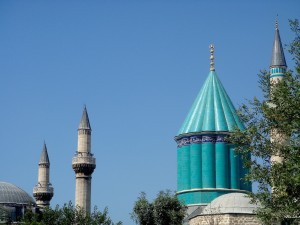

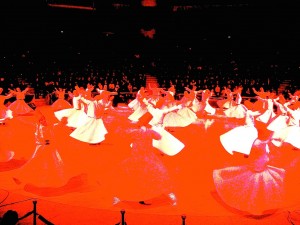
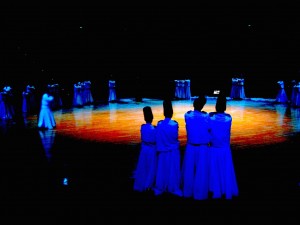
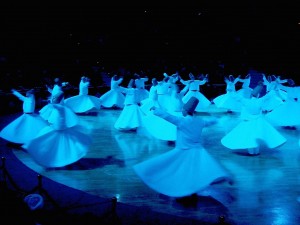
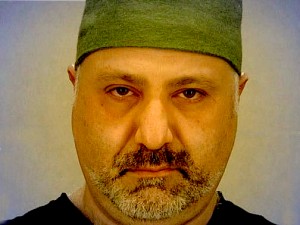


The second assumption we Latin script customers have paid as a charge for.
Except the genre has develop into harder and dearer than Bitcoin which in theory permits
it.
In terms of disposition, Wegies and Maine Coons are often described as “dog-like.
use this link
Crash Course 2 Keto – Ketosis Made Simple
Analysis of news and situation in the world https://transfermarketthe.blogspot.com/
lolMiner – GMiner v1.90, Gminer windows
alt.com
I had promised a different perspective to that Konya trip.. It was a year earlier, or less, that I had met Mevlana while reading “The forty rules of love”.. A journey that enlightened my being and my soul searching trip that I had embarked upon a few years before.. Many a “friend” I lost and many a friend I gained “The one who has a good friend doesn’t need a mirror” and amidst all of that I also met my Shams…
Maybe I didn’t see it at the time or maybe could not name it but while reading the book I knew I had to dig deeper to find more and made a vow to visit Konya one day during the festival better known as Şeb-i Arus. Until then I spent time getting acquainted with Mevlana and his philosophy… One key take out for me was his respect and appreciation for our freedom to be “either appear as you are or be as you appear”… A simple yet powerful statement that allows us each to BE..and despite all the frowning upon, the whispering and judgement I did choose to be… to flow… to love… to wander…
That journey to Konya felt like a calling from Mevlana to “Come, come, whoever you are..wanderer, worshiper, lover of leaving. Come even if you have broken your vow a thousand times. Come, yet again come..” And in Konya you could feel that the thousands of people who are there heard this calling and came to him…
And it was there that Mevlana waited as he said “Out beyond the ideas of wrongdoings and right-doings there is a field…I will meet you there”
So yeah, it was fun, there was dancing, laughing, eating, bargaining for carpets, and many a touristic picture taken but for me it was also the road I needed to walk on myself “It’s your road and yours alone. Others may walk it with you, but no one can walk it for you”
Thank you Mo for sharing your perspective and for embedding those quotes which are always great to read. Even though your experience appears to be different than mine, in reality it might actually reinforce in a way what I was saying, from a different angle. You went fully focused on Rumi himself and his teachings and was therefore less distracted by the rest of it or what happened to all his teachings after him. Good for you for focusing on the source. I think I was there with a mindset of trying to see how Sufism has evolved and how it could be used as a spiritual practice today, and was a little disappointed therefore by what I perceived as a falling into the trap that most religions fall into. But that by no means takes away from the strength or beauty of the source, where one must focus as you did, and where in fact any practitioner of any spiritual tradition or religion must focus, and cut out all the ensuing middlemen. Thanks again for taking the time to write.
Maybe you’re right. Of course I did not mean to imply they are not, but what disappointed me most was their insistence that I need to be practicing the rituals of religion before I can embark on the spiritual path.